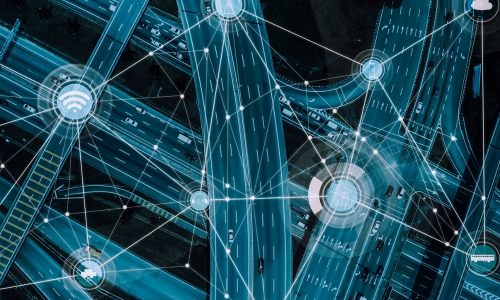Infratech: New Opportunities for Public/Private Partnerships and Unsolicited Proposals
 Infratech, an amalgamation of “infrastructure” and “technology,” refers generally to the development and implementation of new technologies in infrastructure. Just as refrigerators and other household appliances have suddenly become “smart” over the past few years, so too have traffic signals, street lights, water meters, parking garages, and a growing list of other types of public infrastructure. You are likely familiar with smart parking meters, which over the past decade, have rapidly replaced coin-operated meters — what that technology continues to advance, it is really the tip of the spear with respect to new Infratech.
Infratech, an amalgamation of “infrastructure” and “technology,” refers generally to the development and implementation of new technologies in infrastructure. Just as refrigerators and other household appliances have suddenly become “smart” over the past few years, so too have traffic signals, street lights, water meters, parking garages, and a growing list of other types of public infrastructure. You are likely familiar with smart parking meters, which over the past decade, have rapidly replaced coin-operated meters — what that technology continues to advance, it is really the tip of the spear with respect to new Infratech.
The U.S. Department of Transportation’s recent Strengthening Mobility and Revolutionizing Transportation (“SMART”) program, which released $94 million in grants from the Bipartisan Infrastructure Law to promote small-scale “smart city” projects, highlights some of the advancements in Infratech. Examples of projects funded by the program include a $2 million grant to use AI software and sensors to “predict and prevent” traffic accidents in Detroit and a $1.7 million grant awarded to the Santa Clarita Valley Transportation Authority to upgrade traffic signals to give priority to city buses. A full list of recent SMART grants is here and includes technologies such as:
- Smart traffic signals
- Connected vehicles (internet-connected cars that can communicate with other cars and infrastructure)
- Curb management (including management of street parking and loading zones to more efficiently utilize curb space)
- Drones (or “uncrewed aircraft systems”)
- Infrastructure sensors, and
- The smart grid.
Infratech can also be applied to public-health issues, and the development and implementation of smart air quality sensors, is growing. Poor air quality contributes to diseases such as asthma, and local governments have worked to better understand the causes of poor air quality and give more information to their citizens by using sensors to get hyper-local measurements to create air quality maps. For example, in 2021, Copenhagen (a global leader in municipal infratech) partnered with Google and Utrecht University to measure the city’s air quality using sensors installed in Google Street View cars. Additionally, Denver’s “Love My Air” program has been collecting air quality data by installing sensors near local public schools.
For a number of reasons, public/private partners (P3s) are a good fit for Infratech projects. In addition to allowing governments to access sources of private capital and financing (preserving their bonding capacity or avoiding the transactional costs and limitations of bonds for smaller projects where a bond issuance would not be justified), a P3 can offload the risks associated with long-term operations and maintenance to the private sector. Although one could argue that the public sector is equally capable of operating and maintaining roads and bridges as the private sector (although capability does not equate to actual performance, as maintenance budgets are often the first cut, and deferred maintenance is a well-known problem in publicly operated projects), that is almost certainly not the case with infratech, which by its nature involves complex and changing technologies requiring specialized expertise.
Unsolicited proposals are also particularly well suited for infratech. As we recently explained in a post about unsolicited P3 proposals in Florida, an unsolicited proposal can facilitate “consideration of projects or means and methods that would not have otherwise been available for [the government’s] consideration.” Infratech, by its nature, involves rapidly changing technology, and a top-down procurement approach, where the government first evaluates all available technologies and decides what it needs before soliciting proposals, is often not a suitable approach, as there is a high risk of being a step behind the latest advancements or not knowing when an opportunity to incorporate infratech even exits. In some cases, infratech developers will be better suited than governments to identify opportunities in the public sector where their technologies can add value to the public, and unsolicited proposals are the ideal vehicle for moving projects forward under those circumstances.
To download a PDF copy of the blog, click here.
